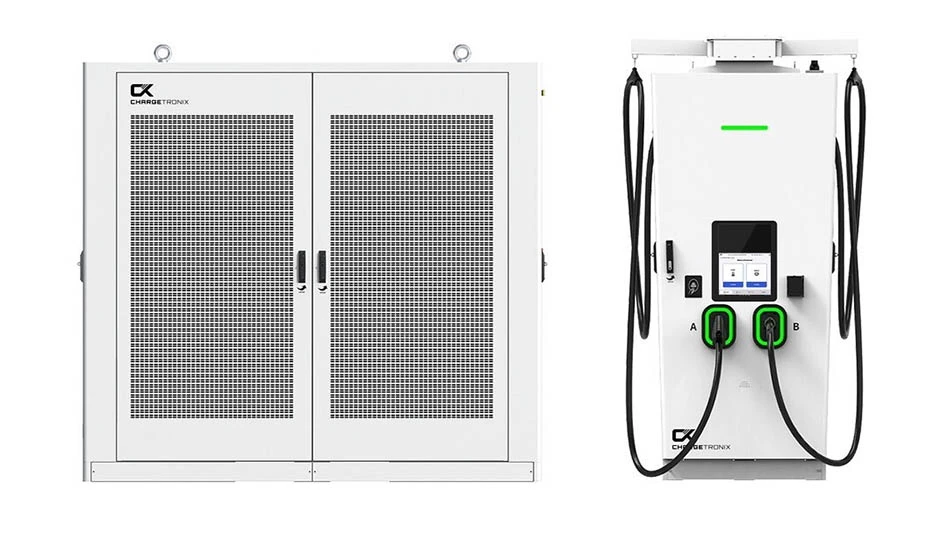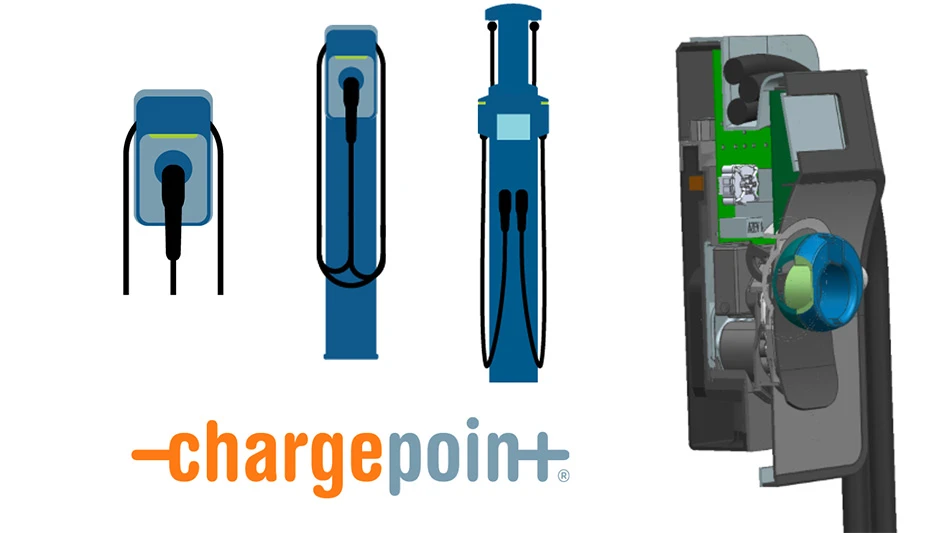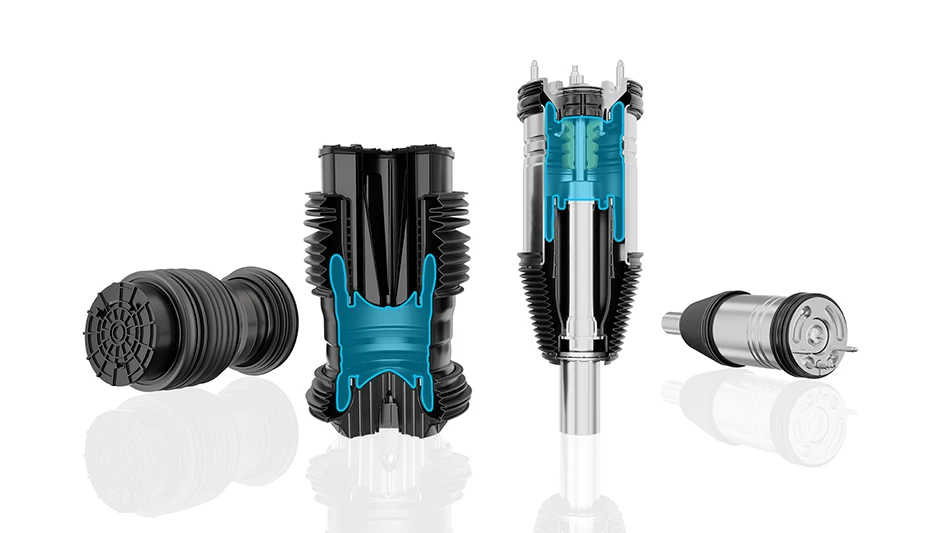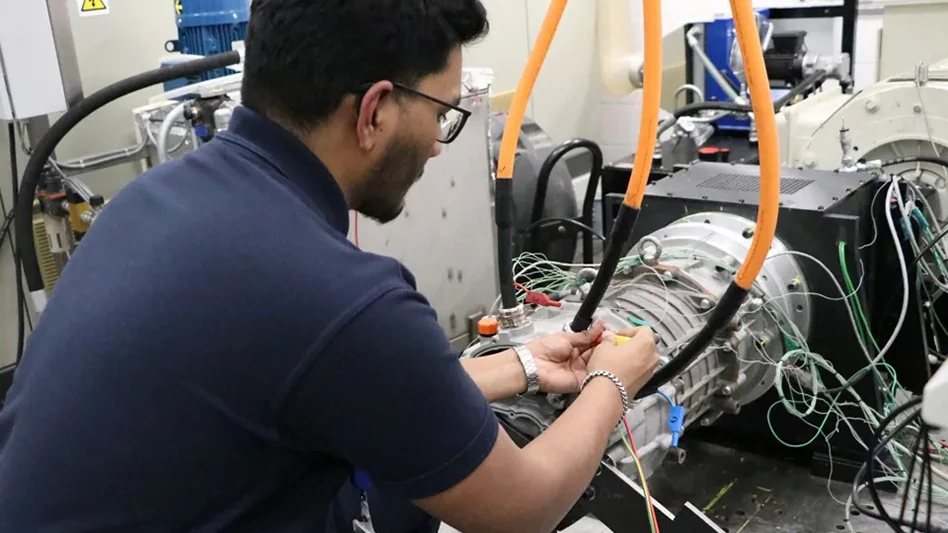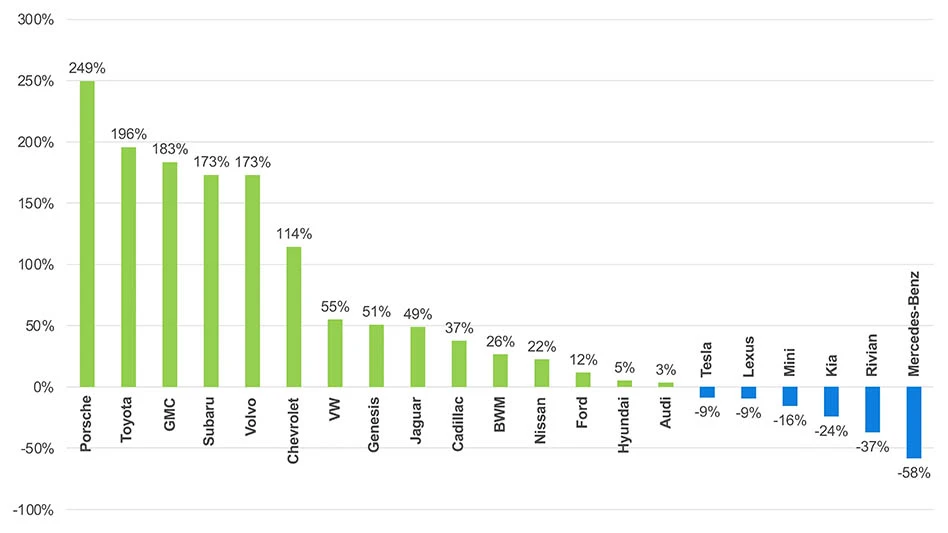
CREDIT: COX AUTOMOTIVE
Nearly 300,0001 new electric vehicles (EVs) were sold in the first quarter of 2025 in the U.S., according to the latest report from Kelley Blue Book, an increase of 11.4% year over year. Despite many obstacles — and what you may read elsewhere — electric vehicle sales continue to grow at a healthy pace in the U.S. market. Roughly 7.5% of total new-vehicle sales in the first quarter were electric vehicles, an increase from 7% a year earlier.
The latest numbers show that growth in the EV market is anything but uniform. New models from Acura, Audi, Chevrolet, Honda, and Porsche, to name a few, are helping drive higher sales. At the same time, established products declined noticeably, as automakers shift market strategy. Goodbye, Chevy Bolt. Hello, Chevy Equinox EV.
General Motors sold a lot of EVs in Q1 of 2025. While GM suffered through painful and slow product launches in 2023 and 2024, the long-promised EVs are starting to flow. More than 30,000 EVs from General Motors brands were sold last quarter, nearly doubling the volume from a year ago and passing both Ford Motor Company and Hyundai Group along the way. And worth noting, Honda and Acura added more than 14,000 EVs to the U.S. market last quarter as well, up from zero a year ago, all courtesy of a short-lived partnership with GM.
Stellantis got in the EV game in Q1, with new products from Dodge, Jeep, and Fiat. It’s a start.
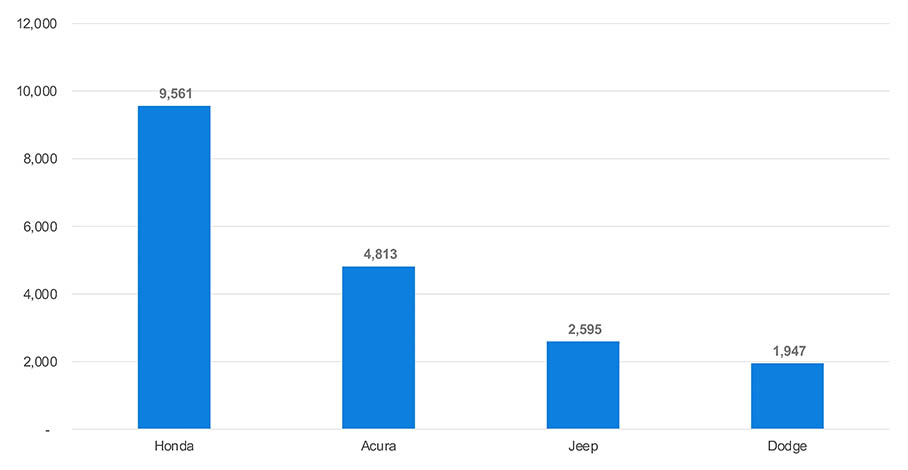
But the EV growth story continues to center on market leader Tesla, which saw sales fall further in Q1, down nearly 9% from year-ago levels. Without a significant shift in product strategy, Tesla will continue to shrink in the U.S. market. A refreshed Model Y is launching in the U.S. right now. How that model will affect sales is yet to be seen.
As Cox Automotive Analyst Stephanie Valdez Streaty noted during the Q1 Cox Automotive forecast call late last month, Tesla’s sales peaked in the U.S. in the spring of 2023 when it pushed more than 173,000 EVs onto the roads, and its share of the total U.S. auto market hit 5%. That was then. In Q1 2025, the EV pioneer was heading back to earth: Sales of 128,000, down 26% from the peak and with a market share closer to 3%. What’s next for Tesla? We’ll let the market decide.
The rest of 2025 will likely be a volatile one for EV sales in the U.S., despite the introduction of new products and healthy incentives. If the new auto tariffs hold, they will pose a monumental challenge for many automakers, particularly due to the tariffs on steel and, importantly for EVs, aluminum. Roughly two-thirds of the EVs sold in the U.S. last year were assembled in the U.S., but like all modern automobiles, the required parts and components are sourced from around the globe. The current, full-blown trade war with China, the world’s leading supplier of EV battery materials, will distort the market even more. Add to that the heavy speculation that the new administration will reverse Biden-era EV sales incentives, and the story for EV sales in Q2 and beyond is murky at best. Notes Valdez Streaty, “The year certainly started strong, but the road ahead will be anything but smooth.”
This article was originally published by Cox Automotive.
Latest from EV Design & Manufacturing
- Key to lithium-sulfur battery performance may be…corn?
- Optimizing production of high-precision components through collaboration
- An inside look at the defense maritime industrial base
- Lucid to acquire select facilities and assets from Nikola Corp.
- CNC coordinate measuring machine for large parts, complex applications
- Battery with built-in fire extinguishing technology moves electric vehicle safety forward
- Axial flux motor accelerates e-mobility
- MARBEL project develops modular, eco-friendly electric vehicle battery
